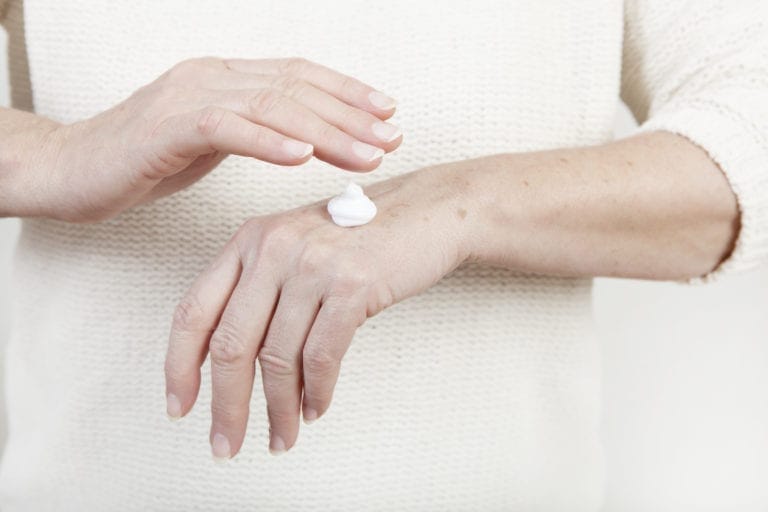One of the common symptoms of type 2 diabetes involves issues with the skin. In fact, as many as a third of those with diabetes will experience a diabetic skin condition at some point. The way your skin looks can not only affect your health, but it can also take a toll on your self-confidence; we all want to look and feel our best. Luckily, by properly managing your diabetes and maintaining a regular skin care routine, many of the common skin problems in diabetics can be avoided altogether.
Common Diabetic Skin Conditions
Some of these skin conditions can affect anyone, not just diabetics. However, those with diabetes are more prone to some skin problems more than the average person might be. Some of the most common diabetic skin conditions include:
Bacterial infections
Conditions like styes, boils, carbuncles or bacterial infections of the nails can be common in those with diabetes. When your skin is hot, inflamed, swollen or painful in certain areas, it’s a sign of a bacterial infection, which can be treated with antibiotics or creams. In rare cases, diabetic blisters can form that resemble a burn blister, but they are generally painless and clear up on their own.
Fungal infections
“Candida albicans,” a yeast-like fungus, is responsible for many of the fungal infections diabetics experience. Itchy, red rashes surrounded by tiny blisters or scales can appear in the warm folds of the skin.
Allergic reactions
Diabetics can experience allergic reactions to foods, bug bites, and medicines which cause bumps, rashes or depressions on the skin.
Dry, itchy skin
Diabetics often feel extremely thirsty due to frequent urination from rising blood glucose levels. When your body is creating excess fluids to urinate often, it can take moisture away from other systems of your body. Your skin might feel itchy and dry as you’re more apt to becoming dehydrated.
Atherosclerosis
This serious health condition is caused by thickening of vessel walls due to plaque buildup that narrows the blood vessels. As the blood vessels supplying oxygen to the skin also narrow, conditions like hair loss, thin, shiny skin, discolored toenails and cold skin are common side effects.
Digital sclerosis
The word “digital” is in reference to your digits – your fingers and toes. As “sclerosis” means hardening, this diabetic skin condition results in the skin of your fingers, toes and hands becoming thick, waxy and tight.
Acanthosis nigricans
This skin condition causing the skin to darken and thicken, with areas of brown or tan skin becoming raised in places like the groin, armpits and creases of the neck. It occurs more commonly in those who are obese.
Vitiligo
This skin disorder causes the cells that make pigment to be destroyed, which results in patches of discolored skin. It most often affects the skin around the hands, elbows and knees but can also be found on the face.
Avoiding Skin Problems in Diabetics
The most important factor in avoiding these diabetic skin conditions is to keep your diabetes under control. Talk about your diabetes management plan with your doctor to make sure you’re keeping your glucose levels in the right range and that you’re eating a healthy diet, exercising regularly, and taking your medications as prescribed.
A few other tips for skin care include:
Keep skin clean and dry. Use a mild soap in warm shower and make sure to dry off thoroughly by patting – not rubbing – your skin with a towel.
Use the right products. Limit the amount of skin care products you’re using regularly, and look for a good moisturizer that is free of fragrances and dyes.
Avoid long, hot showers or baths. Hot water or soaking in a bubble bath can dry out your skin, so take a warm shower instead.
Check your skin after washing. Look for any red, irritated or dry spots on your skin after you get out of the shower to make sure you’re not at risk for any skin infections.
Treat skin injuries promptly. If you notice any scratches or nicks, wash them with soap and water right away. If they aren’t healing properly, ask your doctor for advice on the right antibiotic cream to use.
Use sunscreen outdoors. If you’ll be outside for any length of time, protect your skin by using sunscreen with an SPF of at least 30.
Stay hydrated. Drink plenty of water so your skin stays healthy and moist.
American Senior Communities offers a variety of senior healthcare services throughout our locations in Indiana. Contact us today to request more information.



